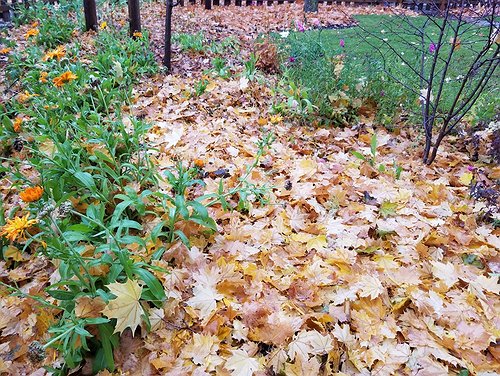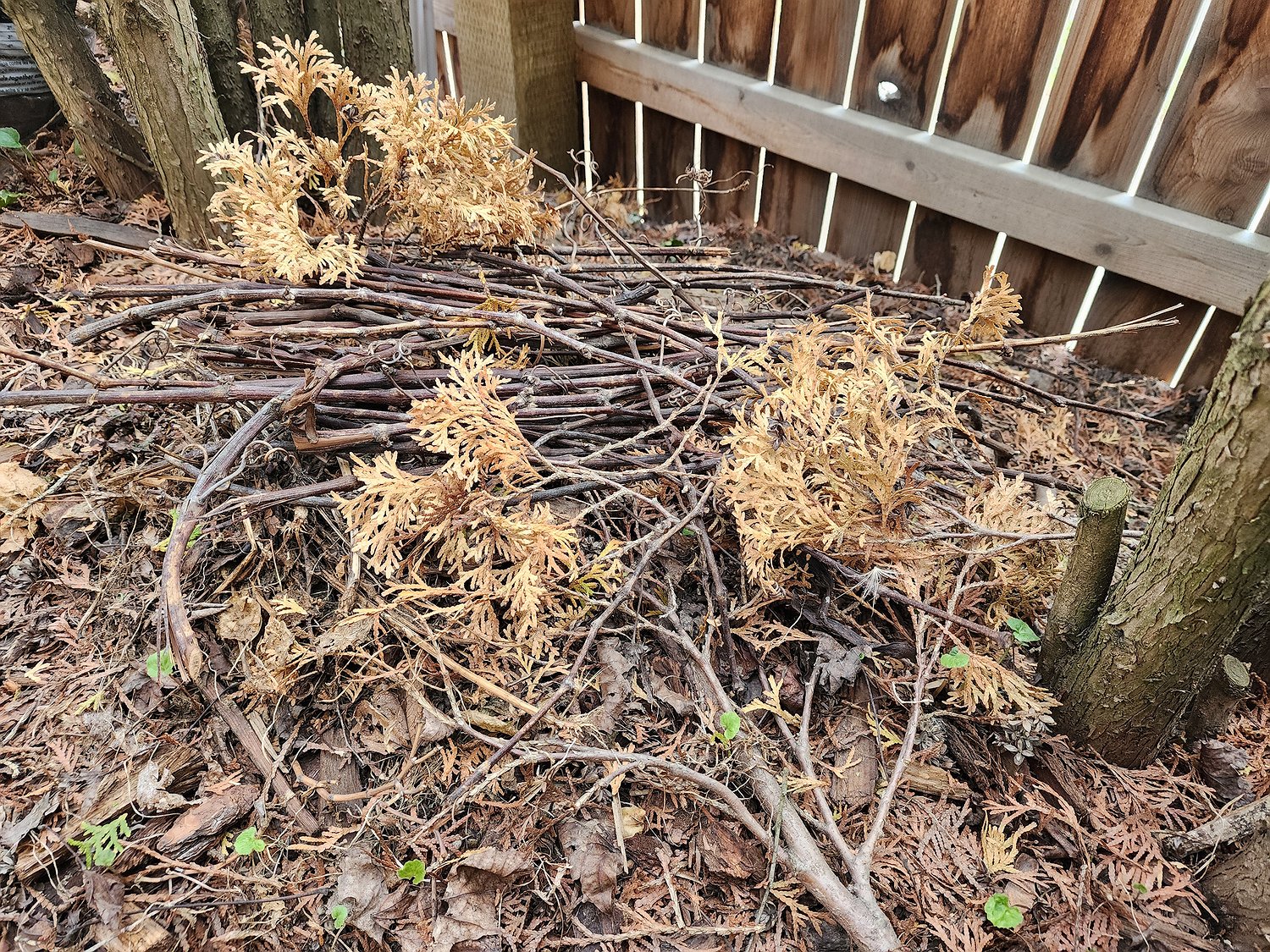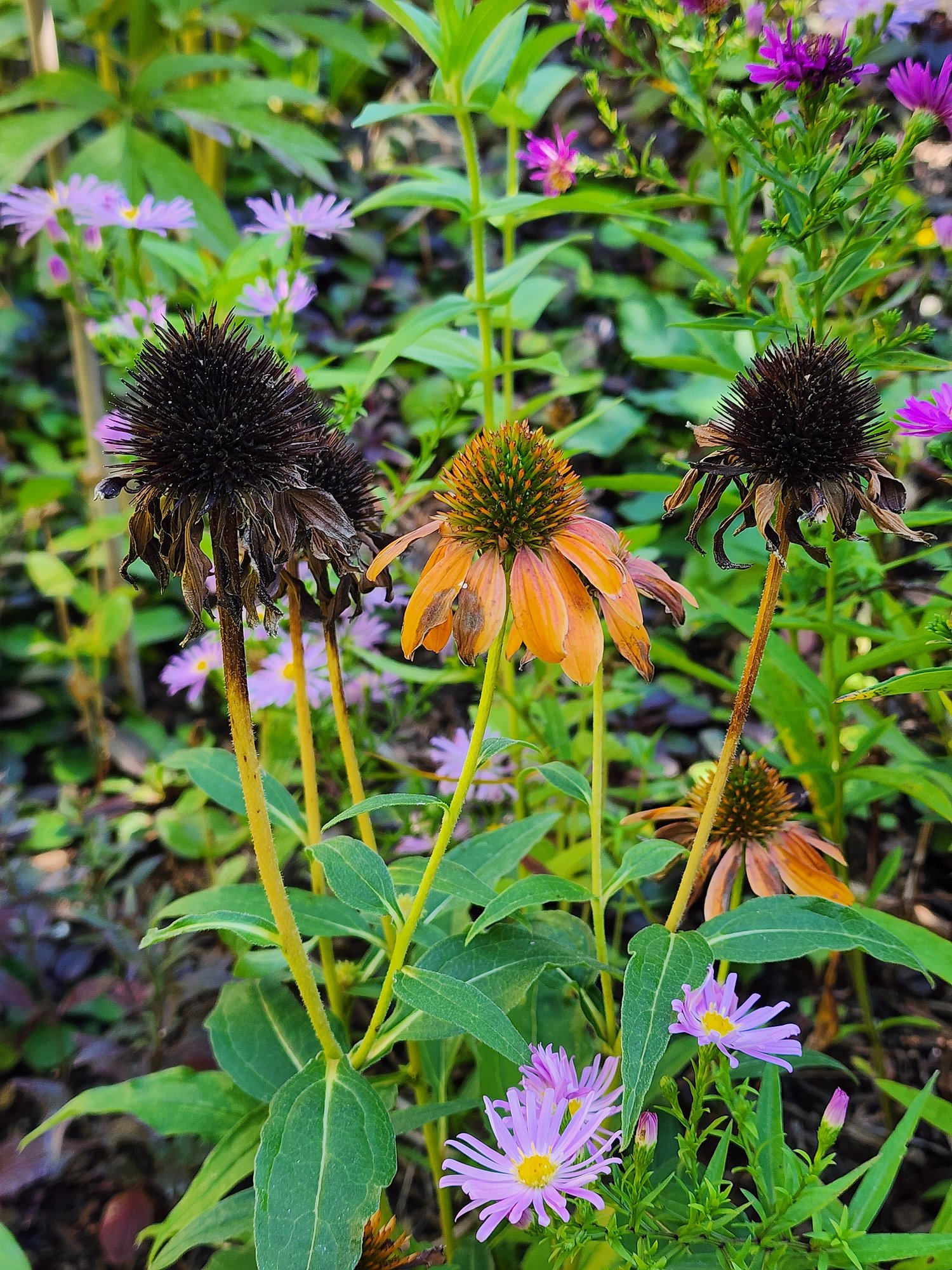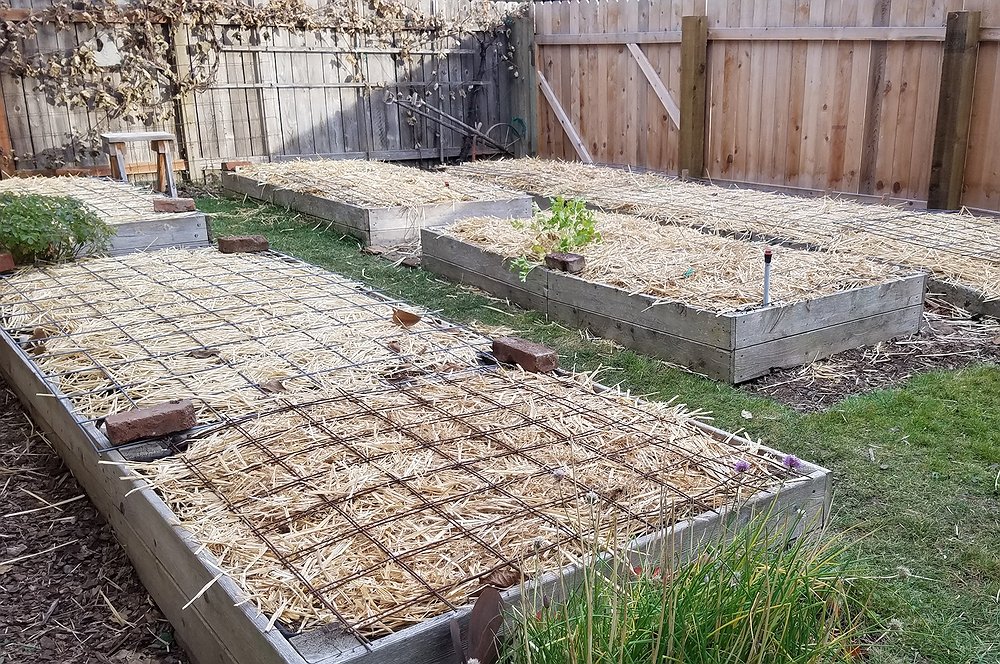Fall garden chores made easier
Next to weeding the garden, the chore most gardeners dread is fall cleanup. If you garden, you’re familiar with the annual October drill of clearing the beds, emptying containers, cutting back perennial flowers and raking fallen leaves or pine needles. Getting the garden in order before winter sets in takes a lot of work.
Don’t work so hard
The good news is that you don’t have to work so hard this fall. It’s high time we reduced the amount of tidying up we do in our gardens and landscapes every fall. Of course, I’m not advocating that you spend your weekends watching football and ignore all your garden chores, but instead of creating a pristine, well-manicured landscape, relax the tidying up a little.
Plant stems, tree leaves and brush piles are havens for many beneficial insects, beetles and native pollinators. I encourage you to leave some leaves, sticks, stems and seed heads; go wild and re-wild a section of your garden as nature intended. Interested?
You get to do less cleaning while providing winter habitat for your garden's vast array of beneficial insects and pollinators. Talk about a win-win situation.
We spend the entire growing season encouraging beneficial insects to visit our gardens. But where do these creatures go in the winter? Very few insects in your landscape migrate to other climates over the winter; most will reside in your garden if you provide welcoming nesting places.
When spring arrives, your garden will be healthier and more vibrant, with these overwintering creatures ready to return to work.
Simple rewilding techniques
Rewilding sounds messy, but it is not. Look around your yard, and you’ll likely find a place to incorporate one or more ways to provide winter habitat for your local beneficial insects.
Instead of raking and bagging leaves that fall in the garden or flower beds, let them be. Many insects, such as the Western tiger swallowtail butterflies, nest in fallen leaves. Leaf piles also create insulation and protection for ground-dwelling queen bumblebees and other beneficial insects that nest underground. When leaves are disposed of, it takes longer for these insects to return to your landscape.
Can you create a brush pile in an unused corner of your landscape? This is very inviting to all insects, including beneficial lacewings and lady beetles. It doesn’t need to be large, unsightly, or a fire hazard. A pile of sticks, bits of bark, a tree snag or brush will provide tiny crevices and tunnels for overwintering.
A rockpile or a stone wall also creates cozy nooks and crannies for insects and adds winter interest to the garden or landscape.
Instead of cutting perennial flowers, like Coneflower, Black-eyed Susan, Joe-Pye or other seed heads to the ground, leave them for food for resident birds. When spring arrives, trim the dried stems to 8 to 24 inches; many native bees will nest and lay eggs in the cavities of pithy or hollow stems in early spring.
Use the chop-and-drop method to feed the garden soil and create insect habitat. Cut spent vegetable plants or annual flowers at the base and leave the roots in the soil and the green material on the surface. Both will slowly decompose over the winter, feeding soil microbes while providing insect habitat.
These rewilding ideas can be done discreetly and out of the way of HOAs or picky neighbors. If your rewilding project is visible to the public, you can always place a sign stating that you have created a beneficial insect habitat in your yard.
Space it out
Fall chores are more difficult when you try to get everything done in one weekend — or worse yet, at the last minute before the snow flies. These days, I tackle my fall chores a little at a time, starting in early September.
As vegetables stop producing, I remove spent plants from the garden or their growing containers and put them in the compost. Containers are rinsed, allowed to dry and stored for the season. Rinsing and drying pots is much easier when the weather is mild!
Emptying containers can be difficult when fall flowers are in bloom, but the last thing you want is to clean pots in the rain or a snowstorm (speaking from experience). Regardless of what’s growing in containers, I try to have them all emptied, cleaned and stored by the third week in October.
A significant fall chore is amending your garden soil. After a vigorous growing season, the soil is likely depleted of essential nutrients. Adding organic matter, such as leaves, plant material or compost, in the fall will enrich the soil and feed those hungry soil inhabitants as it decomposes over winter.
If the plant material in your garden beds is disease-free, you can use the chop-and-drop method instead of pulling plants from the ground to save time. I add a 2-inch layer of compost over chopped plants and then several inches of dried leaves or straw. Finally, I’ll place a cattle panel on top to hold everything snug over the winter.
By embracing a more relaxed approach to fall cleanup, you'll save yourself time and effort and support a healthy, thriving ecosystem. Your garden will become a welcoming winter refuge for beneficial insects and pollinators, ensuring a more robust, vibrant landscape come spring. So, skip the raking and bagging and let nature take its course this fall, knowing you’re positively impacting your landscape and the wildlife it supports.
• • •
Candace Godwin is a certified Idaho Master Gardener, Garden Consultant, and owner of The Coeur d’Alene Coop (thecoeurdalenecoop.com) that offers seasonal plant sales and articles on gardening and raising backyard chickens.













